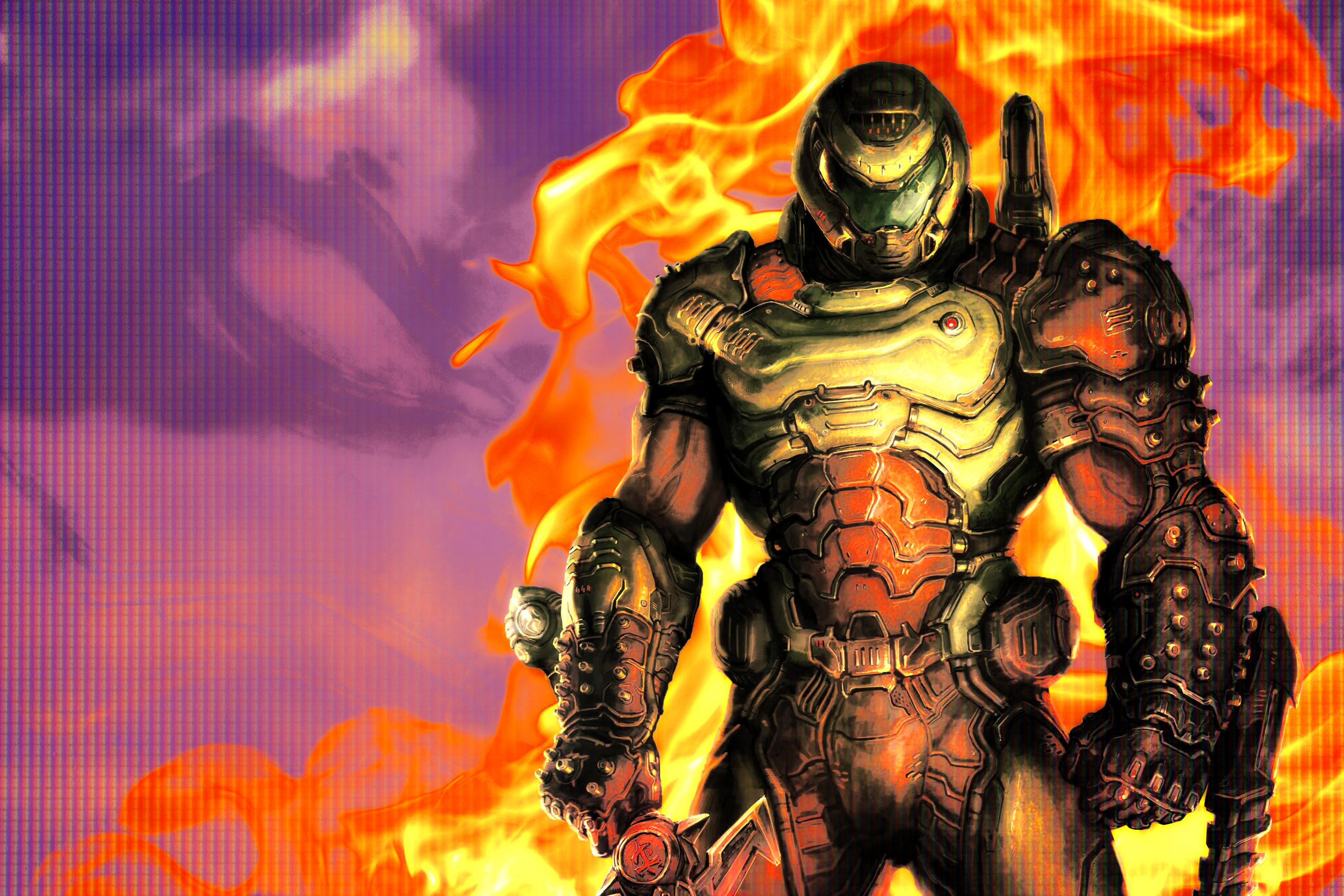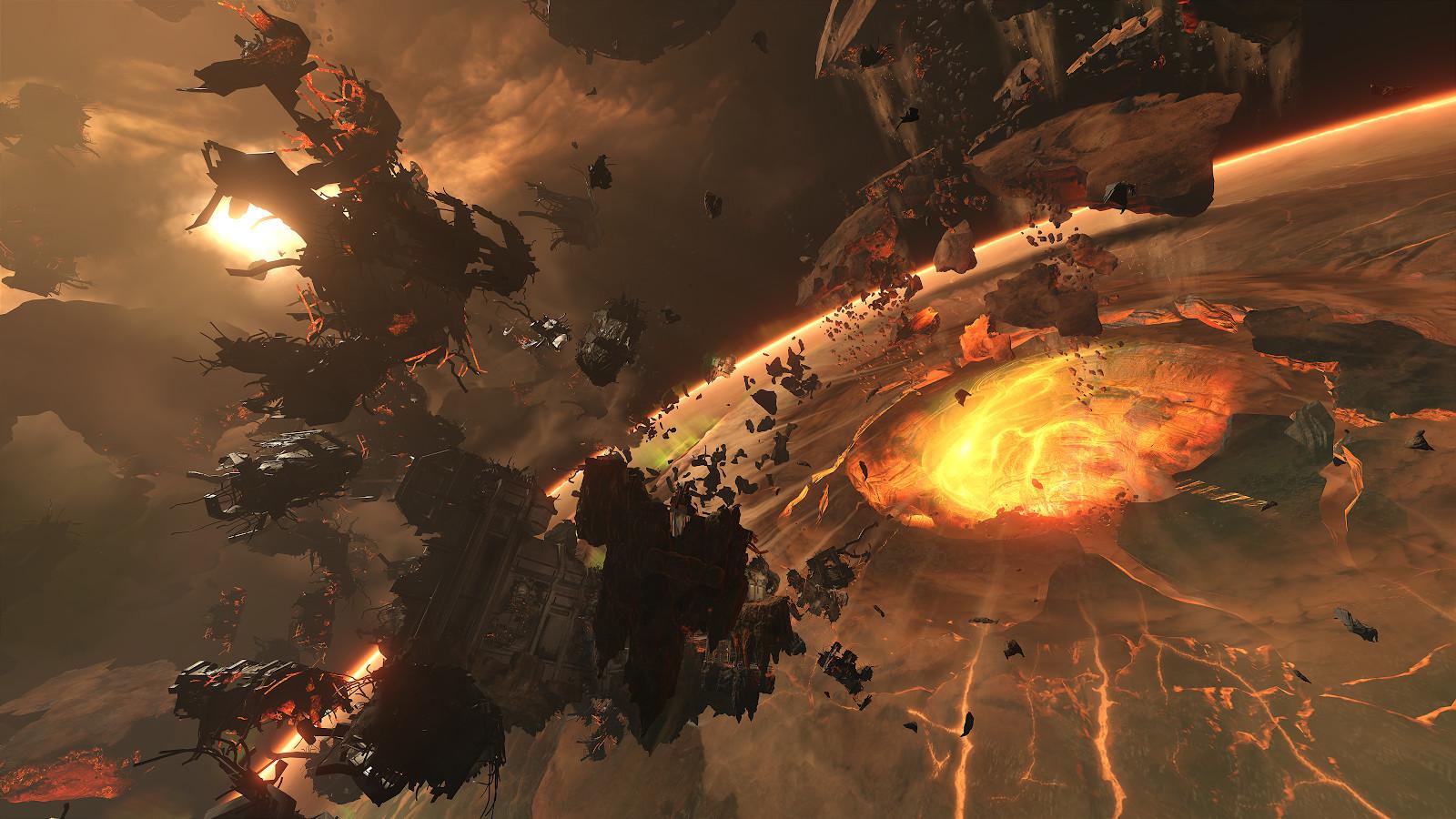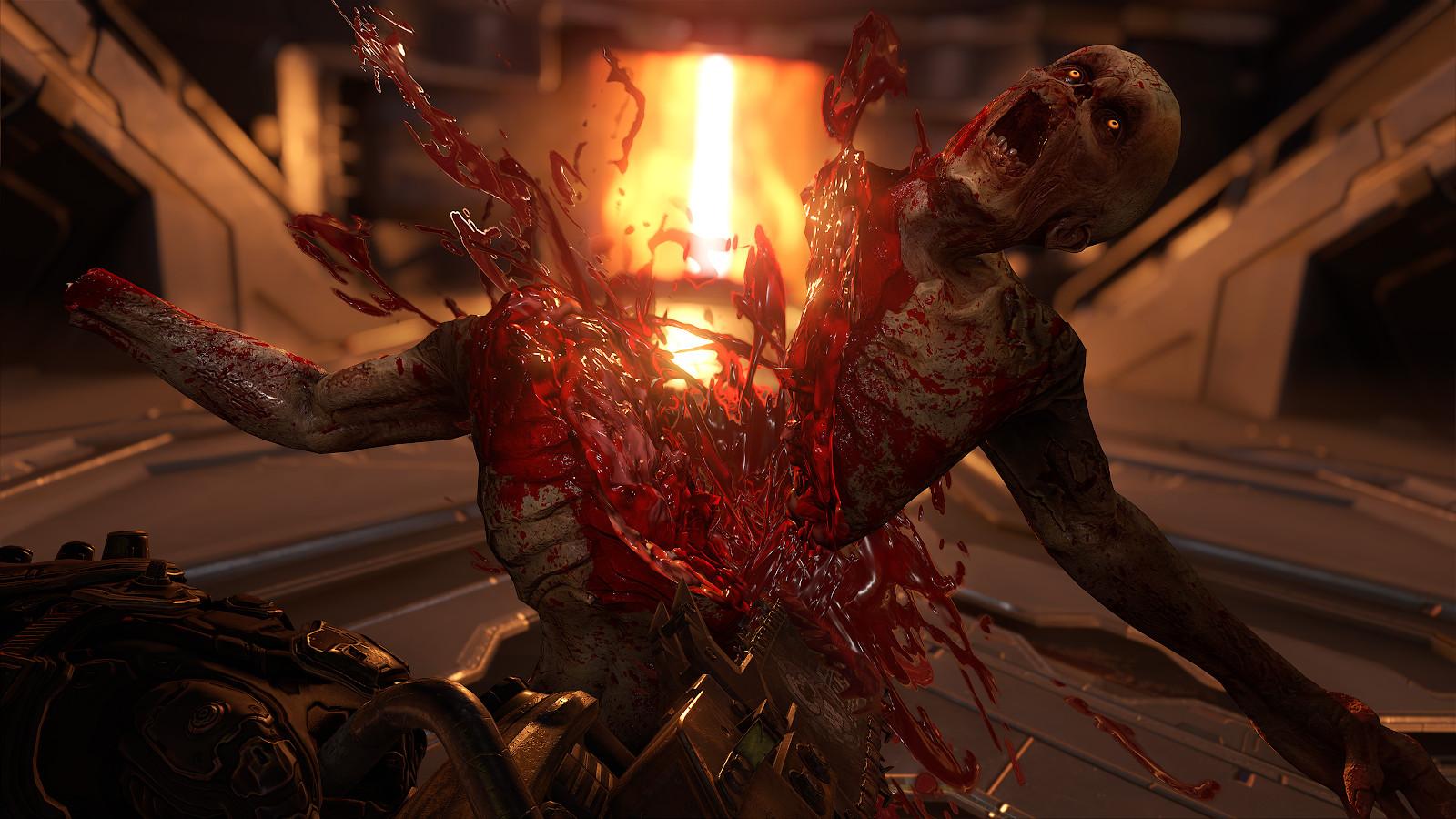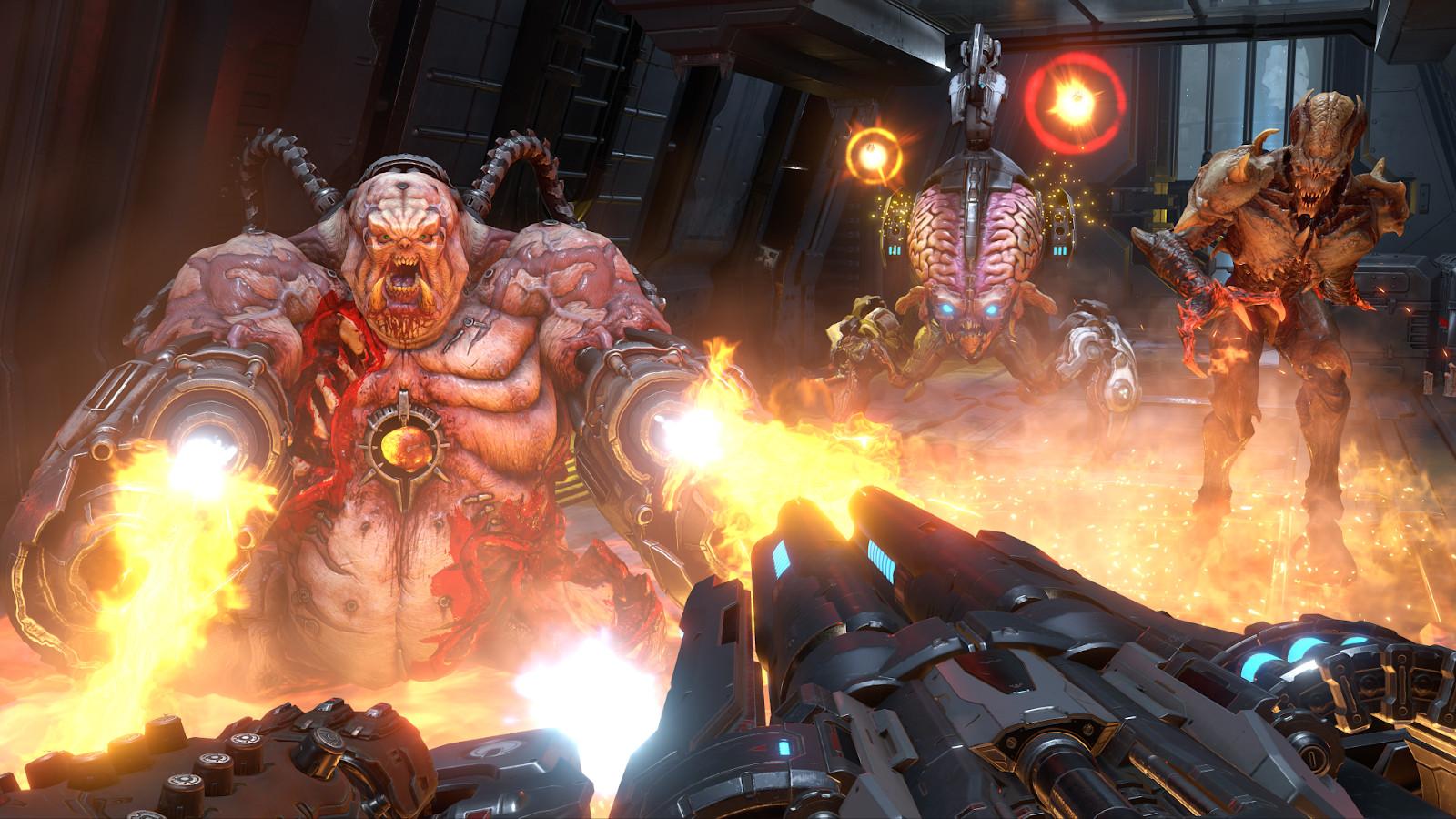‘Doom: Eternal’ Is Bigger, Faster, and More Badass Than Its Predecessors
The new sequel to the 2016 series reboot is longer than its forebears, but it shows why the popularity of ‘Doom’ is, well, eternal

Several hours into Doom: Eternal—the sequel to the celebrated 2016 shooter that rebooted the long-dormant Doom franchise in 2016—a new objective appears on the player’s heads-up display. Unlike a lot of on-screen objectives in video games, Doom: Eternal included, this one doesn’t direct the player to locate a missing MacGuffin, access a secure area, or flip four switches to power up or disable something or other. This one simply says: SHOOT A HOLE IN MARS.

That’s a solid single-sentence distillation of Doom: Eternal’s appeal: Yes, you can shoot a planet, along with everything that moves on multiple planets, in the course of the game’s 20-hour-ish single-player campaign, which was released on Friday for PC, PlayStation 4, Xbox One, and Stadia (with a Switch port on the way). When id Software’s studio director Marty Stratton unveiled Doom at E3 in 2015, he listed the game’s core principles as “badass demons, big effing guns, and moving really, really fast.” All three return for the sequel, which doubles down on the badassery, size, and speed. As the title hints, Eternal is a longer game, and one that in some respects seems overstuffed with nonessential elements. But the series—so synonymous with its genre that “Doom clone” predated “FPS” in the popular lexicon—remains as immersive and magnetic as it was in 1993. That’s about as eternal as video games get.
The key to the kinetic thrill of id’s Doom reboot was a new mechanic called the “glory kill”: a prerendered execution move that the player could activate to tear, rip, or otherwise eviscerate enemies that had soaked up a certain amount of damage and entered a “staggered” state in which they woozily swayed in place. Crucially, each glory kill rewarded the player with a small but significant health boost. The grisly animations that accompanied glory kills provided all the gore that a virtually violent gamer could want, and from a gameplay perspective, the allure of ending an enemy with one button press constantly propelled the player forward.

Doom isn’t a tactical shooter or a Gears of War–style stop-and-sprint experience in which one seeks cover or hides while health recharges. The only way past the demon hordes is through them, so the Doom Slayer is always on offense. Glory kills ensured that the best survival strategy was to stay on the move and run into the fire, and the ability to trigger those finishing moves from far away, coupled with liberal leaping and ledge-grabbing abilities, made Doom a frenetic and acrobatic ballet of combos and bloodshed, part fragfest and part parkour.
Eternal retains the glory kill—so many glory kills, in fact, that I was somehow still encountering new ways to crush skulls and expose innards at the end of the game—and adds a “dash” move that makes the Doom Slayer even more mobile than before. The game also features a Super Shotgun whose “Meat Hook” mod allows the player to grapple toward distant demons and blast them in midair. The designers’ intent was to pick up the pace, and in combat, at least, the new Doom delivers on that goal. Glory kills are no longer as novel as they were in 2016, but almost every battle made me breathless, and almost every level left me flexing my fingers and wondering where the time went.
Between the glory kills, the dash skill, the Meat Hook, and the launch pads littered across every level, the Doom Slayer seems almost weightless. That feeling is reflected in the absence of “head bob,” a rhythmic up-and-down motion from many first-person games that mirrors the movement our real-life visual systems compensate for as we walk. When it’s not making some subset of gamers motion sick, head bob can tether the player to the avatar performing the player’s commands. Even older Doom games had head bob, but aside from a slight sway in the gun that takes up a chunk of the right side of the screen, modern Doom doesn’t. The Slayer seems to skate across each surface, gliding smoothly from one slaughter to the next. It’s an aesthetic choice that deemphasizes the protagonist and puts the focus on the combat, a wise decision when one’s protagonist is a mostly silent, muscle-bound brute who dates back to the days before first-person shooters tried to tell nuanced stories or create characters with compelling personalities. (More on that in a moment.)
If anything, Eternal packs in too many ways to deal death; at times I found myself forgetting or neglecting one or more of the secondary attacks in my arsenal. Landing two glory kills now enables a “Blood Punch,” a melee attack with an area effect that can clear a crowd. Then there’s the “Flame Belch,” which sets surrounding foes on fire, and the chainsaw, which disembowels most demons when it’s filled up with fuel. Eventually, the game grants access to the Crucible, a limited-use sword that cleaves through any enemy with one swing. Factor in two types of grenades and multiple mods for each weapon—all of which are upgradeable via collectibles hidden throughout each level—and there’s a lot of lethality to juggle. There’s no way to get through the game without mastering the madness.
Doom does ease the player into its surprisingly complex combat system, and it continues to mix in more mods and more enemy variants as the game goes on. Although most of the set pieces stick to the same script—enter an indoor or outdoor arena that looks like it’s laid out for a rumble, wait for waves of enemies to spawn and exits to be blocked, frantically fight to a soundtrack of pounding metal music until the last demon is dead, and proceed through a newly opened passageway—each encounter calls for a different set of skills. Whenever I acclimated to the art of rotating tactics, Eternal introduced a different demon with a weak point and attack pattern that set it apart from its fellow soulless soldiers.

Eternal is a challenging game filled with extended, checkpoint-free fights: I’m not an angry gamer, but on a couple of occasions I came as close to rage quitting as I have in some time. (I’ll have nightmares about the Marauder, a new opponent that’s impervious to all but the most precisely timed attacks, as well as the Arch-vile, a returning Doom monster—one of many in Eternal—that summons and shields other demons.) One design decision that ups the game’s degree of difficulty is a scarcity of ammunition, which id implemented to ensure that players wouldn’t grow too attached to any one weapon. In older Doom games, players didn’t even have to reload, but here they’ll have to scrounge for bullets and fuel and switch weapons frequently. The gunplay is good enough that it sometimes feels frustrating that Eternal won’t let shooters shoot, but the resulting depth of strategy more than makes up for the incessant “low ammo” messages. Run-and-gun gets repetitive, but run-and-guns—and chainsaws and swords and flamethrowers—suits Eternal’s grander scope. Although it’s easily the longest edition of Doom, Eternal (which also includes remixed “Master Levels” and a competitive multiplayer mode) never stops experimenting.
Some of the game’s ample playtime is padded by platforming, which makes up a surprisingly prominent part of Doom: Eternal. Double jumps, double dashes, teleportation devices, and the ability to swing on or cling to certain surfaces lead to a lot of leaps of faith across the game’s sprawling, labyrinthine levels, which look like an amalgam of Lovecraft, Roman mythology, and more modern religious iconography. Eternal’s jumping and running work well in combat, but as stand-alone activities, they aren’t as intuitive or satisfying as, say, the platforming in Titanfall 2. Although some amount of exploration, secret-searching, and puzzle-solving provides a needed break between firefights, a few of the more labored platforming sequences—especially those that involve swimming and diving in a special radiation suit—halt the headlong rush in an unwelcome way.
So does some of the lore-ridden plot, which concerns a struggle for survival and ascendance among humans, denizens of hell and (sort of) heaven, and other parties whose histories I won’t pretend to grasp. Eternal loosely parallels Doom II, which was also mostly set on Earth, but the Doom Slayer’s work often ends up taking him to Mars and more remote realms (including Hell and other almost-as-hellish-looking locales), and there’s a far greater range of environments here than there was in the 2016 title. All the player really needs to know, though, is that demons have overrun Earth and it’s up to the Doom Slayer to stop them. Yet Eternal insists on saying so much more, in the process supporting an old point of id cofounder and former Doom lead programmer John Carmack.
Your mileage may vary, but id doesn’t succeed in making me care how or why the Doom Slayer slays. Beyond bloodlust and survival, I don’t need to know his or my motivations for each scene: “Demons are bad, blast them” would have sufficed for me. If you care about the connection between the modern Doom Slayer and the Doomguy/Doom Marine of older Doom games, or how human or godlike he is, or how other peripherally related ancient races structure their societies, you’re in luck: Eternal contains dozens of eye-glazing codex entries filled with capitalized, apostrophe-filled, unpronounceable proper names, including a 14-part history of the Sentinels. (I found 14 parts. There may be more!) Mercifully, every cutscene can be skipped the first time through the campaign, and while FOMO made me watch anyway, I wouldn’t fault anyone for fast-forwarding.
People who preordered or received advance copies of Doom: Eternal also had the option to download Doom 64, a 1997 installment of the series that wasn’t well regarded or well understood in its day but has subsequently seen its stock improve. Eternal unabashedly preserves some staples of video games that were already retro in ’97: floating question marks, armor, and medical kits; exploding barrels; Mario-esque environmental obstacles; discrete, linear levels. And Eternal and Doom 64 also share much of the same Doom DNA: They have a main character in common, as well as similarities in settings, weapons, antagonists, and colored key cards.
Yet the N64 Doom Marine couldn’t jump or aim up or down, let alone grapple, chainsaw, or snipe, and Doom 64’s combined cutscenes (if we can call them that) lasted less than three minutes. I’d happily lose Eternal’s overwrought plot, which squanders some of the atmosphere and mystery that Doom once conjured by dispensing story so sparingly. But otherwise, I wouldn’t want to go back.
In a 2016 PC Gamer guest piece, Supergiant Games designer Greg Kasavin praised Doom’s capacity to invent and, decades later, reinvent its genre. In the wake of Doom, Doom II, and their copycats, Kasavin noted, a legion of developers iterated on id’s formula, incorporating reloading, cover mechanics, and detailed plots. Those innovations eventually became conventional, and reliance on story aside, the new Doom shook up that convention. The reboot, he wrote:
...even asks such questions of the original Doom’s design: What if you could jump and climb as quickly as you could run? What if your enemies could navigate the environments about as effortlessly as you yourself? What if you had ways of replenishing your health and ammo on the spot? … These aren’t deep questions. But they have everything to do with the experience of playing the new Doom, and when you’re in the heat of the moment in the game, you’re not there to think deep thoughts. Your mind is racing, to be sure, but it’s fully occupied with how you’re going to negotiate whichever ridiculous onslaught you happen to be in at the time.
As one might imagine, it’s nice just now not to think deep thoughts. At a moment when millions of self-isolating Americans are wondering what to do with themselves, video games have offered an answer for some. Traffic spikes tell the story of stay-at-home gamers seeking solace in worlds without pandemics; as others have observed, some video games allow us to while away the anxious hours in vast open worlds with comprehensible rules, where we can lead low-stakes lives and at least pretend to go outside. Others, like the laid-back Animal Crossing: New Horizons—another new blockbuster-to-be on the opposite end of the industry’s id-to-Nintendo video-game violence spectrum—peddle the reassuring prospect of complete control over one’s surroundings.
Doom: Eternal’s Earth is even less hospitable than the real one, but it’s empowering to play the part of a savior, and a relief to forget for a while that one person can’t stop a pandemic the way one superpowered person can stop the armies of hell. There’s no more comforting time to cut down demons and Titans and feel like a force of nature than when one is squatting inside, stressing about threats too small to see.

